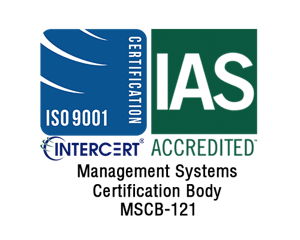At APELC, we specialize in Marx Generators and other pulsed power systems. These systems are characterized by their ability to generate high-voltage/high peak-power pulses of electrical energy that can be delivered to a variety of loads depending on the desired use. A colleague at APELC once argued that everything we make generates “Electromagnetic Pulses” or “EMPs”, due to the fact that, generally speaking, they all create pulses of electromagnetic energy. While this is true, it is important to understand the nomenclature surrounding these systems to help communicate accurately with our customers about desired end-uses.
Hollywood and EMP
Movies such as The Matrix and Oceans 11 portray EMP technology that has the ability to disable any electronic systems in a large radius. In the case of Oceans 11, this was the entire city of Las Vegas. Using this as an example, the device they used was referred to as a “pinch”- which seems to be a misconstrued usage of the term Z-pinch. A Z-pinch refers to the confinement of a plasma in a longitudinal or Z-axis (hench Z-pinch) using a strong magnetic field. While pulsed power is often used to create these, the end-use is most often a nuclear fusion application and not necessarily the generation of an EMP in the sense of disabling electronics. That said, if you were to leave your cell phone too close to the Z-machine at Sandia National Laboratories, it would most likely not survive- but this could occur simply from the strong electromagnetic fields generated by the 20MJ of stored energy released when the machine fires.
In reality, the type of electrical outage shown in Oceans 11 would only occur from a high-altitude nuclear event, and not a pulsed-power based system that could fit inside of a moving van.
High-Altitude Nuclear EMP
As we have mentioned in previous blogs, such as Increased EMP Threats and Testing Standards Part 1: Understanding the threat, the largest threat to electrical infrastructure is a High-Altitude Nuclear EMP (HEMP) event, sometimes also referred to more simply as a Nuclear EMP (NEMP). In this case, a massive EMP is generated by a high-altitude nuclear burst interacting with the upper layers of the Earth’s atmosphere as well as the geomagnetic field. This type of event would be the only realistic means of creating the damage and disruption portrayed in Oceans 11.
HEMP Testing
Because this threat exists, the US Department of Defense generates requirements for testing our military assets against such an EMP. These are outlined in MIL-STDs such as MIL-STD-464C/D, MIL-STD-461G, and MIL-STD-188-125. More can be found on these standards in our previous blog entry, Increased EMP Threats Lead to Changing Testing Standards Part 2: Understanding the Standards.
This is an important example of utilizing the correct nomenclature to help our customers obtain the correct hardware for their testing. If a customer comes to us asking for an “EMP testing” solution we ask if they are referring to HEMP or some other form of testing for electronic disruption, such as Directed Energy (DE) or Intentional Electromagnetic Interference (IEMI). If the customer is specifically looking to conduct HEMP testing, we narrow down the solution depending on whether they want to conduct a conducted or radiated test. In a conducted-susceptibility test, a pulse is injected directly into the Equipment Under Test (EUT), as is the case with MIL-STD-188-125 test equipment, such as APELC’s 1kA E1 suitcase system. In the case of a radiated-susceptibility test, such as MIL-STD-461G/RS-105, the EUT is exposed to a vertically-polarized electric field propagating within a transverse electromagnetic wave (TEM) structure, such as our 2m RS-105 test system.
DE and IEMI Testing
There are instances where our customers are not looking to conduct HEMP testing, and are looking to determine the susceptibility of electronic equipment against other types of electromagnetic energy such as High-power Microwave (HPM) or High-power wideband RF (HPRF). APELC offers systems for Directed Energy (DE) and Intentional Electromagnetic Interference (IEMI) testing, such as our line of compact HPRF Wideband test systems.
So the next time you hear someone talking about EMP, you can ask them exactly what they mean: HEMP, DE, or IEMI?

